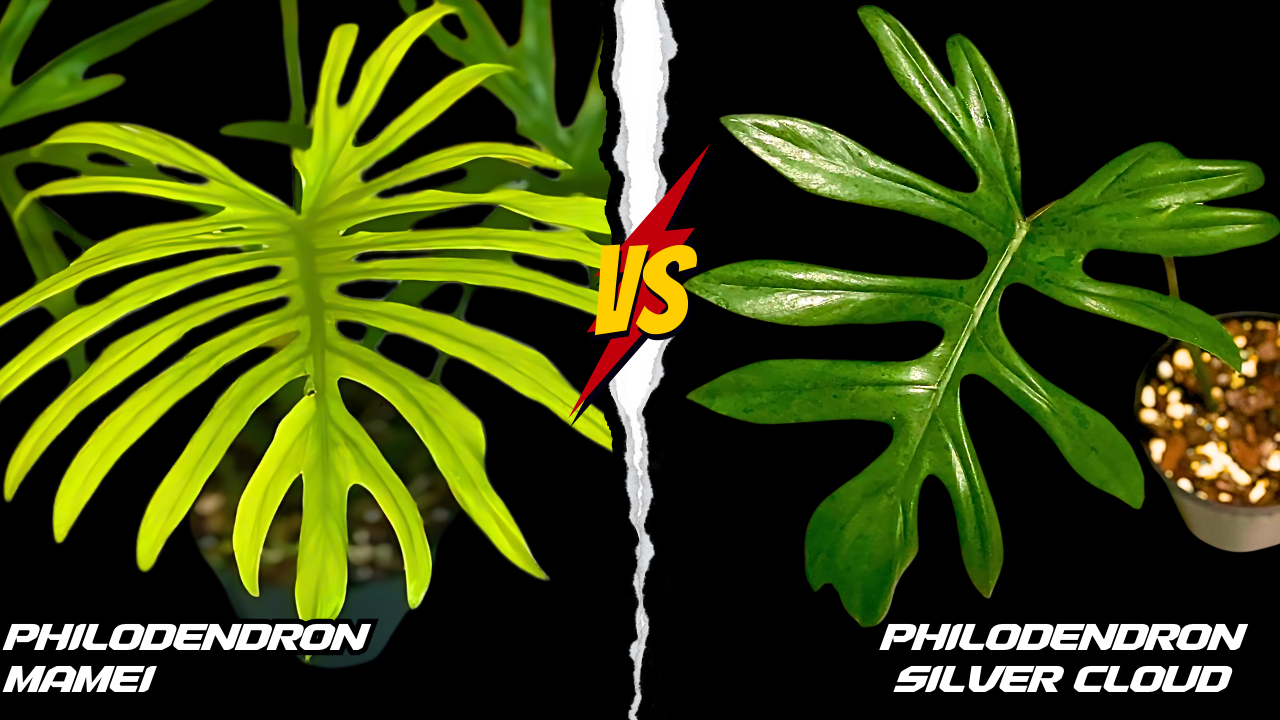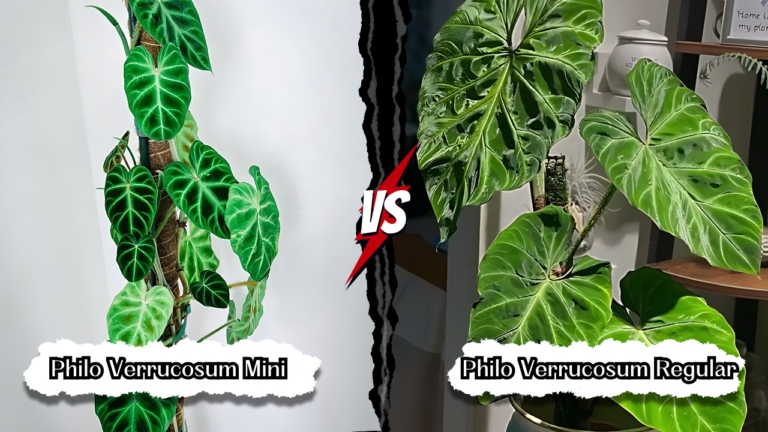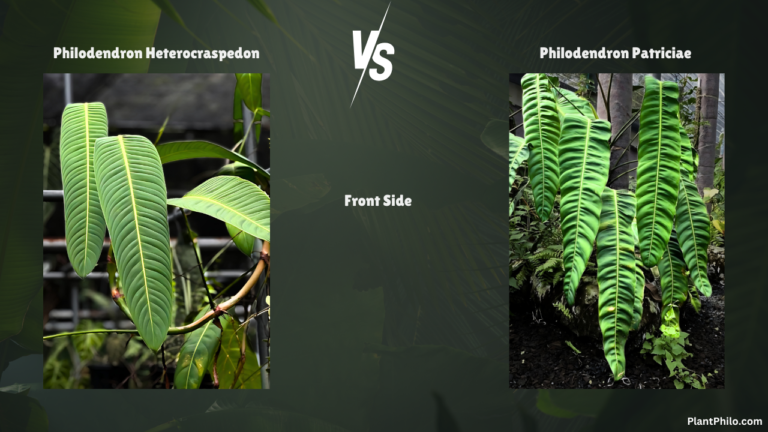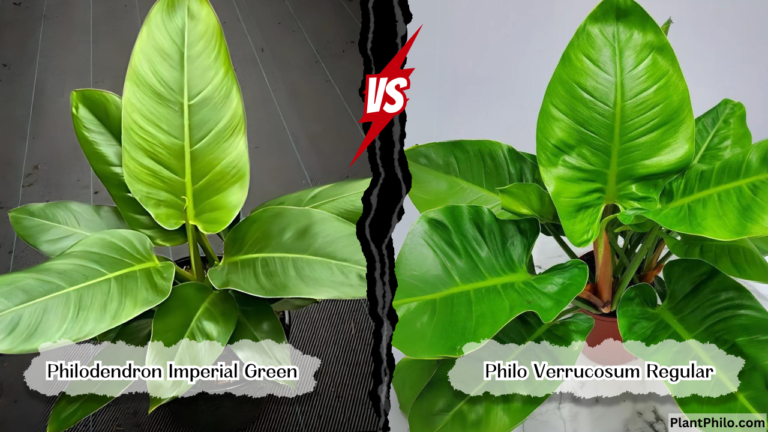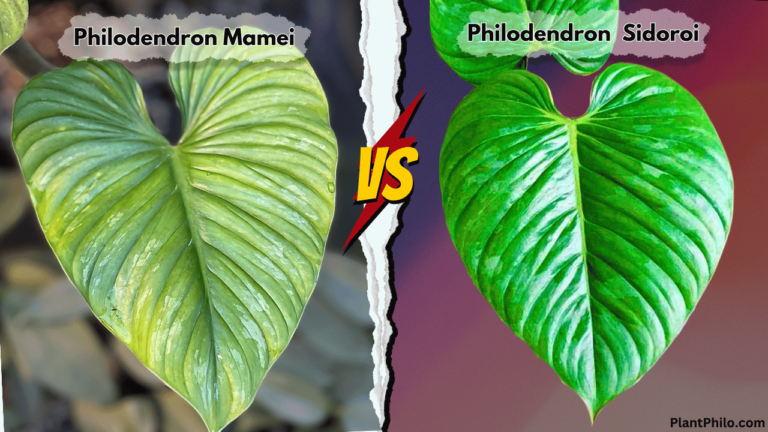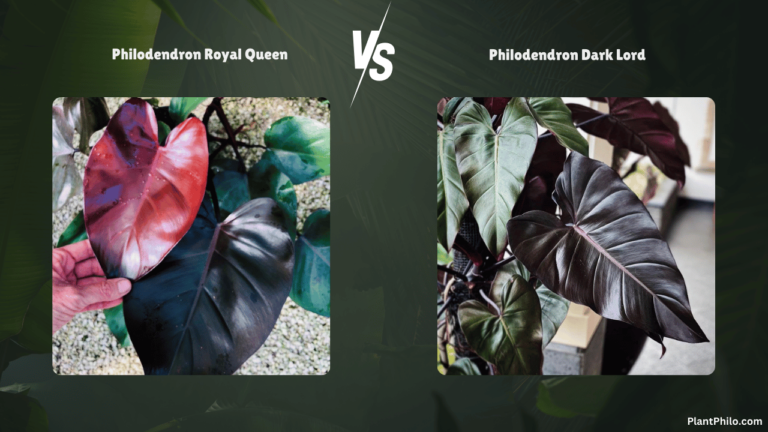Philodendron Elegans vs. Mayoi: Don’t Get ‘Em Twisted!
Philodendron Elegans vs. Mayoi – two names that conjure images of delicate, feathery foliage and a touch of the jungle. But let’s face it, choosing between these two captivating climbers can feel like navigating a dense rainforest of information.
The similarities can be overwhelming, leaving you scratching your head and wondering, “Which one is right for me?” Fear not, fellow plant enthusiast! We’re here to guide you through this verdant maze, shedding light on the unique characteristics and care needs of each plant.
By the end of this journey, you’ll be armed with the knowledge to make an informed choice and bring a touch of the extraordinary into your home.
Elegans vs. Mayoi: Can You Tell Them Apart?
At first glance, these two Philodendrons might seem like long-lost siblings, separated at birth in the depths of the rainforest. But look closer, and you’ll start to notice subtle differences that set them apart. Let’s break down their key features side-by-side:
| Feature | Philodendron Elegans | Philodendron Mayoi |
| Leaf Shape | Deeply pinnatifid with narrow, elongated lobes | Deeply pinnatifid with wider, more triangular lobes |
| Leaf Size | Large, can grow up to 2-3 feet long | Smaller, typically up to 1 foot long |
| Leaf Color | Deep green | Deep green |
| Petiole | Long, green, and smooth | Long, green, and smooth |
| Stem | Green, sometimes with reddish hues | Green, sometimes with reddish hues |
| New Leaf Color | Light green | Light green |
| Growth Habit | Climbing | Climbing |
| Soil | Well-draining aroid mix | Well-draining aroid mix |
| Temperature | 65-80°F (18-27°C) | 65-80°F (18-27°C) |
| Humidity | High (70-90%) | High (70-90%) |
| Light | Bright, indirect light | Bright, indirect light |
| Water | Water when the top few inches of soil are dry | Water when the top few inches of soil are dry |
| Fertilizer | Fertilize monthly during the growing season with a diluted liquid fertilizer | Fertilize monthly during the growing season with a diluted liquid fertilizer |
| Common Pests & Diseases | Spider mites, mealybugs, scale, root rot | Spider mites, mealybugs, scale, root rot |
| Propagation | Stem cuttings | Stem cuttings |
| Toxicity | Toxic to pets and humans if ingested | Toxic to pets and humans if ingested |
| Rarity & Price | Rare, expensive | Less rare, less expensive |
Unraveling Their Roots: A Look at Their Origins
Understanding a plant’s natural habitat is like peeking into its past, giving us valuable insights into its care preferences.
- Philodendron Elegans: This elegant climber hails from the rainforests of Colombia. Imagine its gracefully ascending trees, its delicate, feathery leaves reaching for the dappled sunlight filtering through the dense canopy. To keep it happy indoors, you’ll need to recreate these conditions with bright, indirect light, high humidity, and a well-draining potting mix.
- Philodendron Mayoi: This charming plant is also native to the rainforests of South America. It shares the same climbing habit as Elegans but tends to have smaller leaves with wider lobes. Like Elegans, it thrives in high humidity and bright, indirect light, making it well-suited to indoor environments that mimic its natural habitat.
Elegans vs. Mayoi Leaf by Leaf Visual Comparison
Identifying these two Philodendrons is like solving a botanical puzzle. The leaves hold the key!
- Shape: Both plants have deeply pinnatifid leaves, but Elegans have narrower, more elongated lobes, while Mayoi’s lobes are wider and more triangular.
- Size: Elegans boast larger leaves that can grow up to 2-3 feet long, while Mayoi’s leaves are typically smaller, reaching up to 1 foot in length.
- Color: Both plants have deep green leaves, adding a touch of lushness to any space.
- New Leaf Color: Both Elegans and Mayoi unfurl new leaves in a light green shade.
Stems and Petioles: The Supporting Cast
While the leaves steal the show, don’t overlook the stems and petioles! They play a vital role in the overall aesthetic and health of these plants.
- Both Elegans and Mayoi: Both plants have long, green petioles that support their impressive leaves. The stems are also green, sometimes with reddish hues, and may develop aerial roots as the plants mature, aiding in their climbing habit.
Growth Habits and Care: Elegans vs. Mayoi
Both Elegans and Mayoi are relatively fast growers, and they share similar care requirements for thriving.
- Growth Pattern: Both plants are climbers, using their aerial roots to attach to surfaces. Provide a moss pole or trellis for support, and watch them reach for the sky!
- Light: Both plants prefer bright, indirect light. Avoid direct sunlight, which can scorch their delicate leaves.
- Water: Water when the top few inches of soil are dry. Allow excess water to drain to prevent root rot.
- Soil: A well-draining aroid mix is essential for both plants. Look for a mix that contains perlite, coco coir, or orchid bark to ensure proper drainage and aeration.
- Humidity: Both plants crave high humidity (70-90%). Misting, pebble trays, or a humidifier are essential to create a suitable environment.
- Temperature: Both plants prefer warm temperatures between 65-80°F. Avoid cold drafts and sudden temperature changes.
- Fertilizer: Fertilize monthly during the growing season (spring and summer) with a diluted liquid fertilizer.
- Pruning: Prune regularly to maintain shape and encourage new growth. You can also propagate your plants from stem cuttings.
- Pests & Diseases: Keep an eye out for common pests like spider mites, mealybugs, and scale. Treat infestations promptly with insecticidal soap or neem oil. Root rot can be a problem if the soil is kept too wet. Ensure proper drainage and avoid overwatering.
FAQs: Elegans vs. Mayoi
Which plant is rarer, Elegans or Mayoi?
Philodendron Elegans is generally considered rarer and more expensive than Mayoi.
Can I grow these plants in low light?
No, both plants require bright, indirect light to thrive. Low light will result in leggy growth and smaller leaves.
How often should I repot my Philodendron?
Repot every 1-2 years in the spring or summer when the plant becomes rootbound.
Why are the leaves on my Philodendron turning yellow?
Yellowing leaves can be a sign of overwatering, underwatering, or nutrient deficiencies. Check the soil moisture and adjust your watering accordingly. You may also need to fertilize your plant.
Can I propagate these plants from leaf cuttings?
No, Philodendrons cannot be propagated from leaf cuttings. You’ll need to take stem cuttings with at least one node.
Are these plants toxic to pets?
Yes, both Elegans and Mayoi are toxic to pets if ingested. Keep them out of reach of curious cats and dogs.
How do I clean the leaves of my Philodendron?
Gently wipe the leaves with a damp cloth to remove dust and grime. Avoid using harsh chemicals or leaf shine products.
Why is my Philodendron leggy?
Leggy growth is often a sign of insufficient light. Move your plant to a brighter location or provide supplemental artificial light.
Can I train my Philodendron to climb?
Yes, both Elegans and Mayoi are natural climbers and will benefit from a moss pole or trellis for support.
Where can I buy Philodendron Elegans and Mayoi?
You may be able to find these plants at specialty plant shops or online retailers. Be prepared to pay a premium price, especially for Elegans, as it is rarer.
Choosing Your Feathery Friend
Choosing between Philodendron Elegans and Mayoi ultimately comes down to personal preference and budget. If you’re looking for a showstopper with large, deeply lobed leaves and don’t mind paying a premium, Elegans might be your dream plant. If you prefer a slightly smaller plant with wider lobes and a more budget-friendly price tag, Mayoi could be the perfect addition to your collection.
No matter which plant you choose, remember that both Elegans and Mayoi are beautiful, rewarding houseplants that will bring a touch of the tropics into your home. With a little care and attention, they will thrive and provide you with years of enjoyment.

